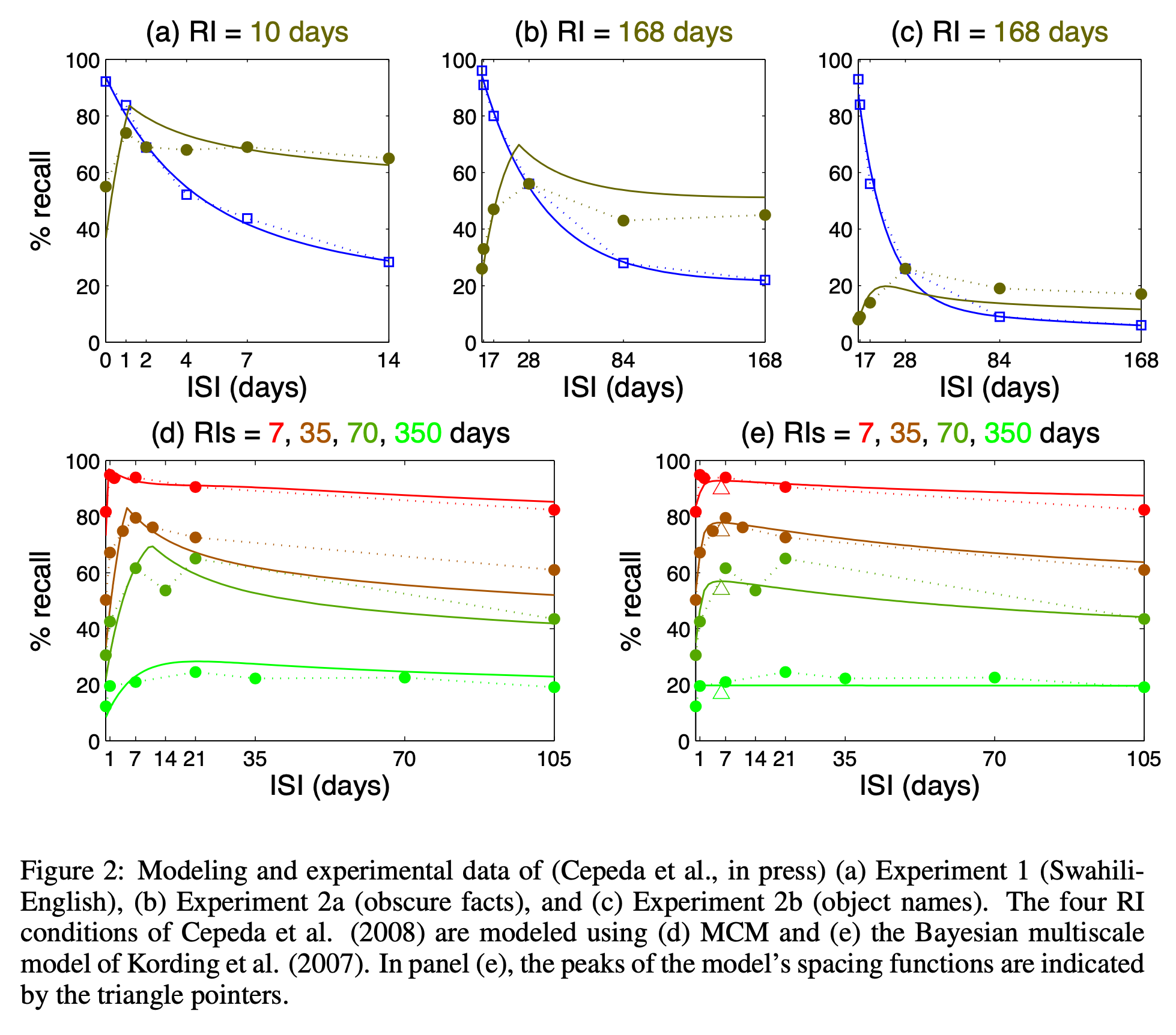Andyʼs working notes
About these notesMozer, M. C., Pashler, H., Cepeda, N., Lindsey, R., & Vul, E. (2009). Predicting the Optimal Spacing of Study: A Multiscale Context Model of Memory. In Y. Bengio, D. Schuurmans, J. Lafferty, C. K. I. Williams, & A. Culotta (Eds.), Advances in Neural Information Processing Systems 22 (pp. 1321–1329).
This paper proposes a model which can fit the spacing function (i.e. of the Spacing effect) and the Forgetting curve of empirical learning data (e.g. from a Spaced repetition memory system).
It’s inspired by two prior models which attempt to capture and explain the Spacing effect: the search of associative memory (SAM) model, which is predicated on an encoding-variability theory; and the multiple-time scale (MTS) model, which is predicated on a predictive-utility theory.
It integrates the two in a model which represents pools of contextual stimuli on different timescales:
The authors fit their model to prior empirical data, which it explains moderately well with just four parameters (well, five, but they fit that one to the first experiment and then didn’t touch it):

(figure (e) is a different model, potentially related)
Q. What two theories of the spacing effect is Mozer et al’s 2009 multi scale context model based on?
A. encoding-variability theory and predictive-utility theory